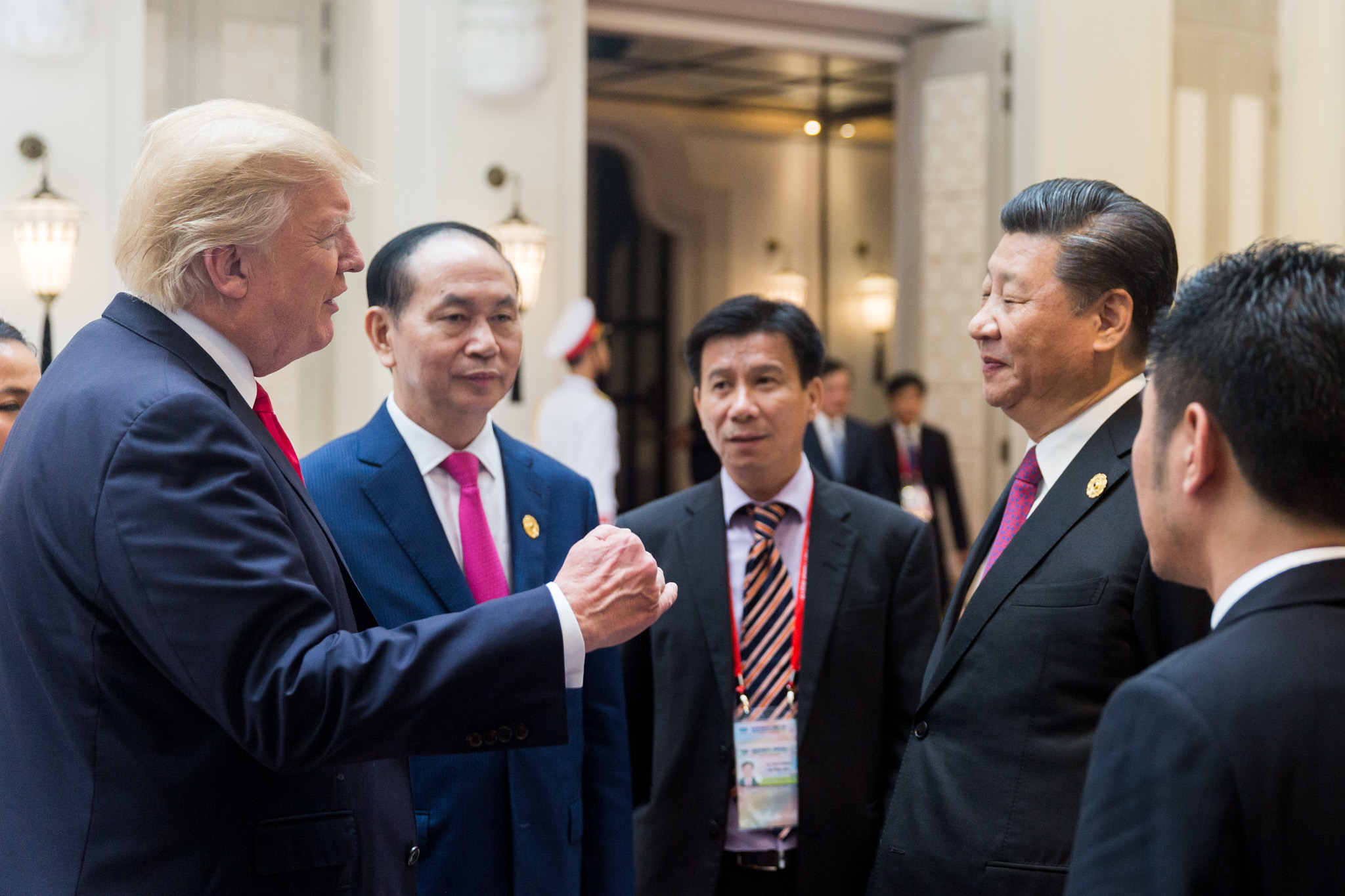Donald Trump has ignited a tit-for-tat with China over trade. Last month, he announced tariffs on steel and aluminum imports, exempting several countries, but not China. They responded on Monday by imposing similar tariffs on several U.S. products, including pork and fruits. Greg Sargent noted where the impact of those would be felt.
The Brookings analysis — which is based on data from EMSI and the Bureau of Labor Statistics — shows that the largest sum of vulnerable jobs is in fruit and nut farming, with the majority concentrated in Trump counties. Most of the jobs in hog and pig farming and pipe production are also concentrated in Trump country. It’s only in wineries where Clinton counties have the most jobs.
As all of that was building, Trump dismissed concerns over the escalation by tweeting that “trade wars are good and easy to win.” His next move was to threaten to impose tariffs on China’s developing technology sector. And now China has responded by letting him know what they would do in return: impose tariffs on soybeans, cars and some airplanes. Once again, Trump was dismissive of the potential impact.
Some of the responses to that tweet told the story. For example:
See, this is the type of logic that explains why 6 of Trump’s businesses went bankrupt https://t.co/Ifl6ozW5vV
— Rob Cohen (@Rob_Coh) April 4, 2018
If you asked how somebody could go broke running casinos, you have your answer. https://t.co/ZLyRdAKHJ2
— Charles P. Pierce (@CharlesPPierce) April 4, 2018
If anyone doubted that China’s first response heavily targeted Trump counties, this latest threat removes any doubt. Soybeans are the top U.S. agricultural export to China, worth over $14 billion annually. Bloomberg put together a map to show where “soybean voters” are concentrated.
Great Bloomberg chart showing “Soybean Voters” who’ll get slammed by Chinese tariffs. Won’t be pleasant for Midwest Republicans this November. pic.twitter.com/OToevIF3Df
— Joshua Green (@JoshuaGreen) April 4, 2018
China’s proposed duties could be felt strongest in the U.S. heartland, where Midwest voters helped secure Trump’s election victory. The escalating trade spat threatens to weaken some of that support. The top producers of soybeans include political battleground states like Ohio and Iowa.
It is pretty clear what China is attempting to do.
Christopher Balding, an associate professor at the HSBC Business School in Shenzhen, said that comparing the U.S. and Chinese lists showed China’s willingness to target products such as soybeans, automobiles and planes that could create political problems for Trump.
“Even though the numbers between China and the U.S. are comparable, it seems clear that China is trying to twist the knife,” he said, “This is a warning that ‘we are willing to fight harder and inflict more pain that you are.’”
The problem is that, based on what we know about Trump, his response to such a challenge is more likely to be a need to demonstrate that he is willing to fight even harder and inflict even more pain. The president has also jettisoned anyone from the White House who might be able to talk him down, although even Larry Kudlow, Trump’s new chief economic advisor, doesn’t seem to know what to make of all this.
The question of the hour is whether anyone will be able to talk Donald Trump out of escalating a trade war with China. Having gone this far, it’s hard to imagine how he can back down without looking like a loser.



